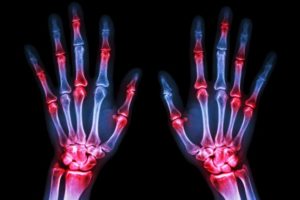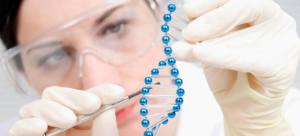Osteoarthritis (OA) Specimens
Bay Biosciences provides high quality, clinical grade bio-samples, cryogenically preserved tissue samples, sera (serum), plasma and peripheral blood mononuclear cells (PBMC) biofluid specimens from patients diagnosed with Osteoarthritis (OA) disease.
The sera (serum), plasma and PBMC biofluid samples are processed from patient’s peripheral whole-blood using customized processing protocols. The Osteoarthritis (OA) bio-specimens are collected from unique patients diagnosed with Osteoarthritis (OA) and are provided to a valued pharmaceutical customer for research, development and drug discovery.

Osteoarthritis (OA) Overview
Osteoarthritis is the most common form of arthritis, affecting millions of people worldwide. It is among the most prevalent and disabling chronic conditions in the United States. The prevalence increases with age, and by the age of 65, approximately 80 percent of the U.S. population is affected with osteoarthritis.
Osteoarthritis occurs when the smooth cushion between bones (cartilage) at the end of the bones breaks down over time, joints can get painful, swollen and hard to move. Although osteoarthritis can damage any joint, the disorder most commonly affects joints in the hands, knees, hips, lower back, neck and spine. Osteoarthritis can develop at any age, but it commonly starts in the 50’s and affects women more than men. This disease starts gradually and worsens over time.
Osteoarthritis (OA) Causes
Osteoarthritis occurs when the cartilage that cushions the ends of bones in the joints gradually deteriorates. Cartilage is a firm, slippery tissue that enables nearly frictionless joint motion. Eventually, if the cartilage wears down completely, bone will rub on bone. OA can cause pain, stiffness, and swelling. Osteoarthritis has often been referred to as a “wear and tear” disease. But besides the breakdown of cartilage, osteoarthritis affects the entire joint. It causes changes in the bone and deterioration of the connective tissues that hold the joint together and attach muscle to bone. It also causes inflammation of the joint lining. Osteoarthritis was believed to be caused by the wearing down of joints over time, researchers and scientists now see it as a disease of the joint.
Following are some of the factors that may contribute to Osteoarthritis (OA):
- Age: The risk of developing Osteoarthritis increases with age as individuals gets older because bones, muscles and joints are also aging.
- Joint Injury: A break or tear in the joints, can lead to Osteoarthritis after years. Injuries, such as those that occur when playing sports or from an accident, can increase the risk of osteoarthritis. Even injuries that occurred many years ago and seemingly healed can increase your risk of osteoarthritis.
- Overuse, repeated stress on the Joints: If your job or a sport you play places repetitive stress on a joints, that joint might eventually develop osteoarthritis.
- Obesity: Carrying extra body weight contributes to osteoarthritis in several ways, and the more you weigh, the greater the risk of developing Osteoarthritis. Increased weight adds stress to weight-bearing joints, such as your hips and knees. Extra weight also puts more stress on a joint and fats cells promote inflammation, fat tissue produces proteins that can cause harmful inflammation in and around the joints.
- Weak Muscles: Joints can get out of the right position when there’s not enough support.
- Genetics: Some people inherit a tendency to develop osteoarthritis, people with family members who have Osteoarthritis are more likely to develop Osteoarthritis.
- Sex: Women are more likely to develop Osteoarthritis than men.
- Bone Deformities: Some people are born with malformed joints or defective cartilage.
- Certain metabolic diseases: These include diabetes and a condition in which your body has too much iron (hemochromatosis) can cause Osteoarthritis.

Osteoarthritis (OA) Signs & Symptoms
Osteoarthritis signs and symptoms often develop slowly and worsen over time, which include:
- Pain and Aches: Pain or aching in the joint during of after movement or activity.
- Stiffness: Joint stiffness usually occurs first thing in the morning or after resting.
- Swelling around a joint: This might be caused by soft tissue inflammation around the joint.
- Muscle Weakness: Osteoarthritis patients may feel muscle weakness around the joint.
- Joint Instability: Joint instability or buckling (knee gives out).
- Tenderness: The joint might feel tender when light pressure is applied to or near it.
- Loss of flexibility: Osteoarthritis patients might have a limited range of motion and not be able to move their joint through its full range of motion.
- Grating Sensation: You might feel a grating sensation when you use the joint, and you might hear popping, clicking or crackling sound when a joint bends.
- Bone Spurs: Extra bits of bone, which feel like hard lumps, can form around the affected joint.
Here are ways that Osteoarthritis (OA) may affect different parts of the body:
- Hips: Pain is felt in the groin area or buttocks and sometimes on the inside of the knee or thigh.
- Knees: A “grating” or “scraping” feeling when moving the knee.
- Fingers: Bony growths (spurs) at the edge of joints can cause fingers to become swollen, tender and red. There may be pain at the base of the thumb.
- Feet- The big toe feels painful and tender. Ankles or toes may swell.
As Osteoarthritis disease gets worse, cartilage may get uneven edges and cracks. Bones may harden, change shape and get bumpy. Once cartilage breaks down, it doesn’t grow back on its own.
Osteoarthritis (OA) Genetics
Osteoarthritis (OA) is a multifactorial disease which means that there are many different influences acting together to cause the appearance of the Osteoarthritis (OA) disease. Genetic factors have been found to be strong determinants of the Osteoarthritis (OA )disease. Evidence of a genetic influence of Osteoarthritis (OA) comes from a number of sources, including epidemiological studies of family history and family clustering and exploration of rare genetic disorders. Several studies have shown that the influence of genetic factors is between 39% and 65% in radiographic Osteoarthritis (OA) of the hand and knee in women, about 60% in Osteoarthritis (OA) of the hip, and about 70% in Osteoarthritis (OA) of the spine. Combined together, these estimates suggest a heritability of Osteoarthritis (OA) of 50% or more, indicating that half the variation in susceptibility to disease in the population is explained by genetic factors.
Studies have implicated linkages to Osteoarthritis (OA) on chromosome 2q, 9q, 11q, and 16p, among others. Genes implicated in association studies include VDR, AGC1, IGF-1, ER alpha, TGF beta, CRTM (cartilage matrix protein), CRTL (cartilage link protein), and collagen II, IX, and XI. Genes may operate differently in the two sexes, at different body sites, and on different disease features within body sites. Osteoarthritis (OA) is a complex disease, and understanding its complexity should help us find the genes and new pathways and drug targets.
Detailed clinical data, MRI, scans, biopsy tissue, joint fluid analysis, elevated biomarker levels, genetic and metabolic information, histopathological findings, annotations associated with Osteoarthritis patient’s specimens is provided to a valued customer for research, diagnostics, development and drug discovery. The Osteoarthritis sera (serum), plasma and peripheral blood mononuclear cells (PBMC) biofluid samples are processed from patients peripheral whole-blood using customized collection and processing protocols.
Bay Biosciences is a global leader in providing researchers with high quality, clinical grade, fully characterized human tissue samples, bio-specimens and human bio-fluid collections from cancer (tumor) tissue, cancer sera (serum), cancer plasma, cancer PBMC and human tissue samples from most other therapeutic areas and diseases.
Bay Biosciences maintains and manages it’s own bio-repository, human tissue bank (biobank) consisting of thousands of diseased samples (specimens) and from normal healthy donors available in all formats and types. Our biobank procures and stores fully consented, deidentified and institutional review boards (IRB) approved human tissue samples and matched controls.
All our human human tissue collections, human specimens and human bio-fluids are provided with detailed samples associated patient’s clinical data. This critical patient’s clinical data includes information relating to their past and current disease, treatment history, lifestyle choices, biomarkers and genetic information. Patient’s data is extremely valuable for researchers and is used to help identify new effective treatments (drug discovery & development) in oncology, other therapeutic areas and diseases. This clinical information is critical to demonstrate their impact, monitor the safety of medicines, testing & diagnostics, and generate new knowledge about the causes of disease and illness.
Bay Biosciences banks wide variety of human tissue samples and biological samples including cryogenically preserved -80°C, fresh, fresh frozen tissue samples, tumor tissue samples, FFPE’s, tissue slides, with matching human bio-fluids, whole blood and blood derived products such as serum, plasma and PBMC’s.
Bay Biosciences is a global leader in collecting and providing human tissue samples according to the researchers specified requirements and customized, tailor made collection protocols. Please contact us anytime to discuss your special research projects and customized human tissue sample requirements.
Bay Biosciences provides human tissue samples (human specimens) from diseased and normal healthy donors; including peripheral whole-blood, amniotic fluid, bronchoalveolar lavage fluid (BAL), sputum, pleural effusion, cerebrospinal fluid (CSF), serum (sera), plasma, peripheral blood mononuclear cells (PBMC’s), saliva, Buffy coat, urine, stool samples, aqueous humor, vitreous humor, kidney stones, renal calculi, nephrolithiasis, urolithiasis and other bodily fluids from most diseases including cancer. We can also procure most human bio-specimens and can do special collections and requests of human samples that are difficult to find. All our human tissue samples are procured through IRB approved clinical protocols and procedures.
In addition to the standard processing protocols Bay Biosciences can also provide human plasma, serum, PBMC bio-fluid samples using custom processing protocols, you can buy donor specific sample collections in higher volumes and specified sample aliquoting from us.
Bay Biosciences also provides human samples from normal healthy donors, volunteers, for controls and clinical research, contact us Now.
日本のお客様は、ベイバイオサイエンスジャパンBay Biosciences Japan またはhttp://baybiosciences-jp.com/contact/までご連絡ください。



